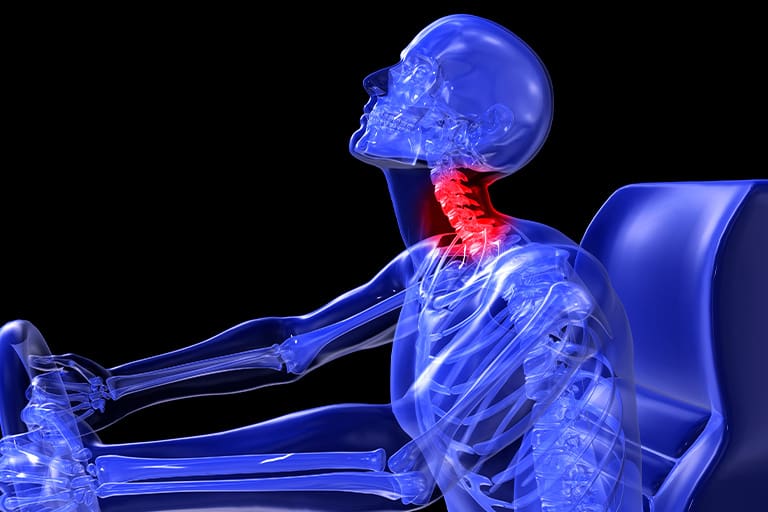The Two Most Common Types of Rear End Collision Injury
Rear end collisions are often spoken of as one of the less severe categories of car accident, simply due the damage, or lack thereof, they tend to cause to the vehicles involved. Dents on front and rear bumpers will inevitably reduce a car’s resale value and may require interior repairs to components such as the radiator or the latch on the trunk, but it’s rare for these superficial damages to keep a car off the road for any extended period of time. The same cannot be said for the drivers involved. Even at low speeds, in controlled environments such as parking lots, a rear end collision can leave victims with years of chronic pain and a difficult recovery. Today’s Malloy Law blog post will unpack and explain the most common varieties of rear end collision injury. Read on for the full account.
The Physics Involved in a Rear End Collision Injury
Let’s talk briefly about the mechanics involved when a human body finds itself at the epicenter of the forces exerted by a rear end collision. Given the safety features standard in modern vehicles, most notably seat belts, the body is generally held in one place when the vehicle is jostled or rocked violently by the forces exerted upon it by the vehicle striking it from behind. However, the head and neck area are still free to move forwards and backwards, and therefore tend to absorb most of the force exerted. Unfortunately, the head and neck are two of the most sensitive parts of the human body. They are both essential to the operation of our nervous system, and even a minor disruption to the nervous system can leave the victim with nagging, debilitating pains for years to come.
The Two Main Categories of Rear End Collision Injury
The first major category of rear end collision injury is a traumatic brain injury, or TBI. This will most often occur as the result of a blow to the head itself. In the case of a rear end collision, this will generally mean an impact on the steering wheel or dashboard. The most common variety of TBI is a concussion, which can manifest symptoms such as:
- Headaches
- Dizziness
- Nausea
- Light Sensitivity
- Blurred vision
- Mental fog
- Mood swings
- Trouble sleeping
The other major category of injury likely to result from a rear end collision is a soft tissue neck injury. While you may not be familiar with this type of injury, you’ve likely heard it referred to under the colloquial term “whiplash.” We here at Malloy Law Offices tend to avoid usage of this term, as years of hard work by insurance companies and their legal professionals have cast these injuries as minor, exaggerated bumps and bruises, inflated by greedy hypochondriacs. For more on this subject, you can hear our founder and managing partner Seann Malloy on our YouTube channel.
Symptoms of soft-tissue neck injuries include:
- Neck pain and stiffness
- Reduced range of motion in the neck
- Headaches, often starting at the base of the skull
- Shoulder or upper back pain
- Tingling or numbness in the arms
- Fatigue or dizziness
- Jaw pain or difficulty chewing
- Ringing in the ears (tinnitus)
The Importance of Medical Attention
If you’ve been rear-ended, seeking prompt medical attention is almost always a prudent move. Speaking from a strict legal perspective, a formal documentation of any injury sustained in the accident can only benefit any insurance claim or personal injury lawsuit you may wish to pursue. But just from the perspective of your personal health and wellness, prompt attention may keep minor injuries from decaying into serious, long term conditions. The shock and jolt of an accident may flood the body with endorphins and leave the victim feeling better than ever, which may obscure latent injury. It pays to make sure before putting the accident behind you and getting on with your life.
How Malloy Law Can Help
If you or a loved one has been involved in a rear end collision, Malloy Law can help. Our experienced personal injury attorneys and dedicated support staff are standing by twenty-four hours a day. We’ll evaluate your case free of charge and formulate a plan of action to win maximum compensation on your behalf. Contact Malloy Law today to get started.




